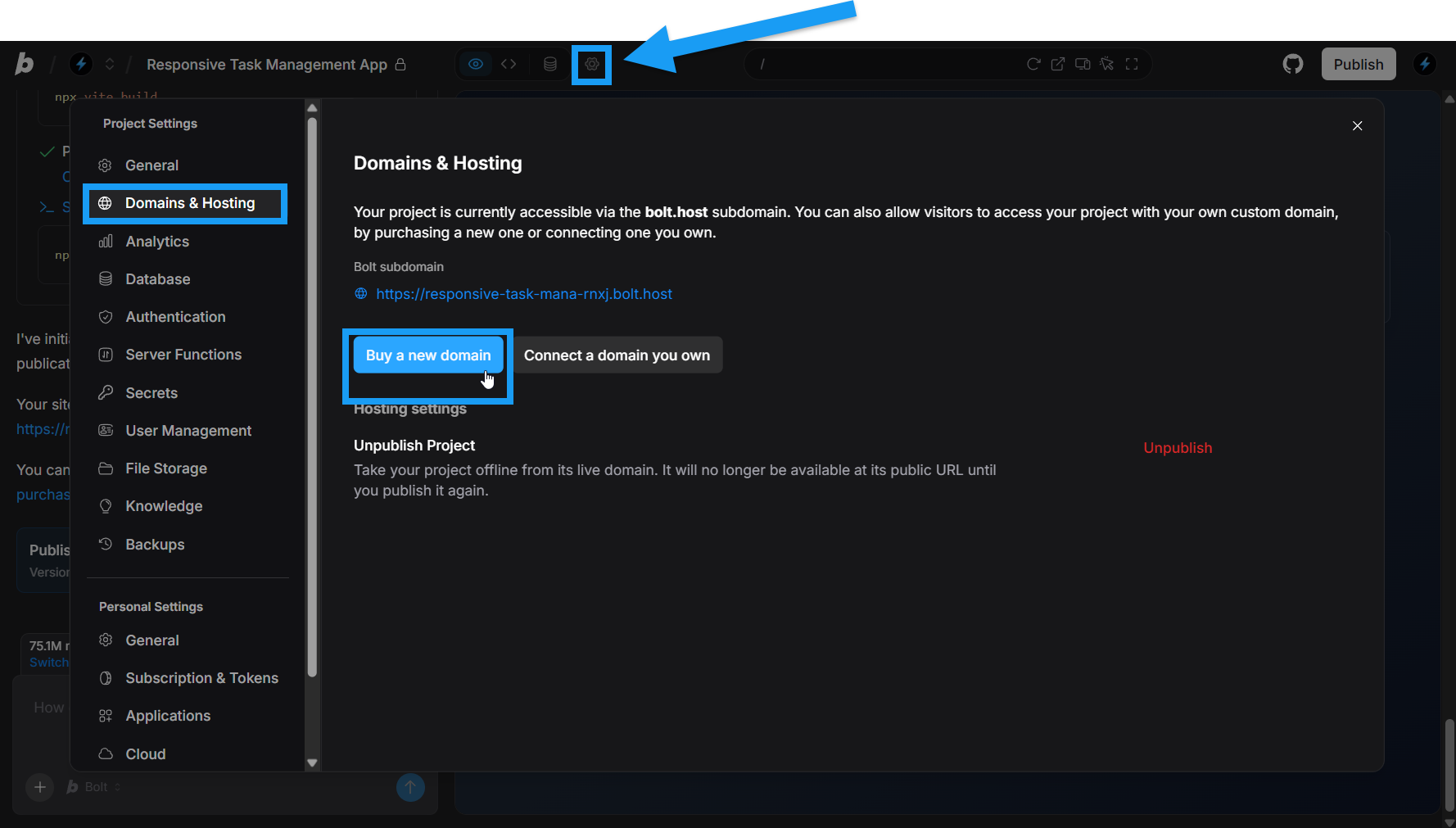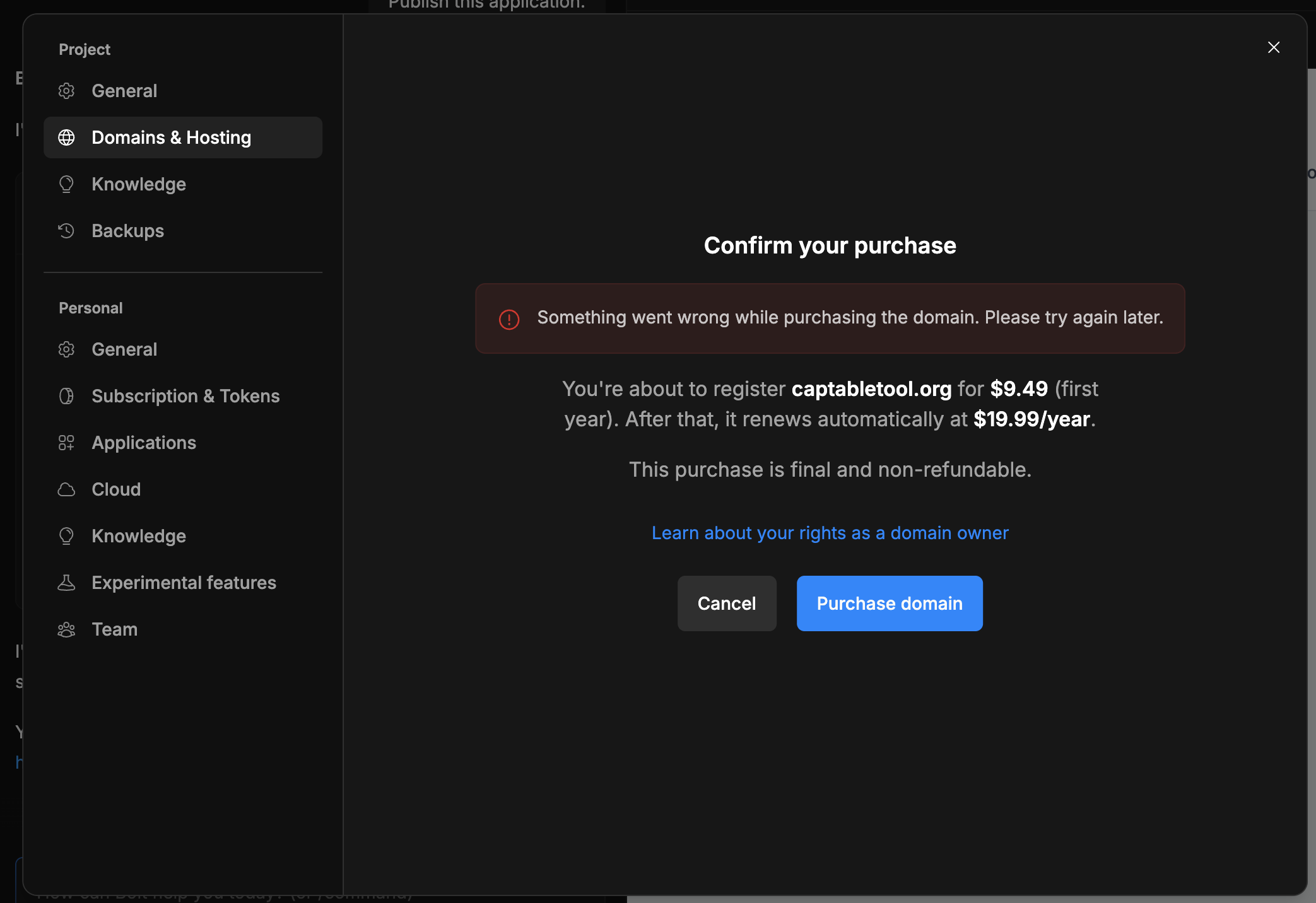How to purchase a domain
To purchase a domain using Bolt, follow these steps:
- Click the gear icon in the top center of your screen, then click All project settings.
- Click Domains & Hosting.
- Click Buy a new domain.
- Enter your domain keyword or phrase.
- Click Search.
-
Review the available list of domains.
You’ll see a warning if there’s a problem with the domain you searched for, such as if it’s already registered.
- Click Buy next to your preferred domain.
- Choose to Purchase domain or Cancel the purchase.
To learn more about your rights as a domain owner, see the ICANN article on Registrants’ Benefits and Responsibilities.
Purchasing failures due to billing issues
To buy a custom domain through Bolt, you must have billing set up with a valid payment method on your account. If no card is on file, the purchase will fail and you’ll see an error message saying “Something went wrong,” as shown in the screenshot below:
Domain types (TLDs)
A domain name ends with what’s called a top-level domain (TLD), such as.com, .org, or .studio. Bolt offers the ability to purchase the most common TLDs directly through the platform, but not every TLD is available.
If your domain uses a TLD that Bolt doesn’t sell, you can register it with another provider. Once it’s registered, you can still connect it to your Bolt project by following the steps in Connect your domain.
WHOIS Privacy
All Bolt domain purchases automatically include domain privacy protection, except for TLDs that do not support it. For example,.us domains do not allow domain privacy.
Domain privacy hides your personal contact information from the public WHOIS database, which helps reduce spam and protect you from unwanted contact.